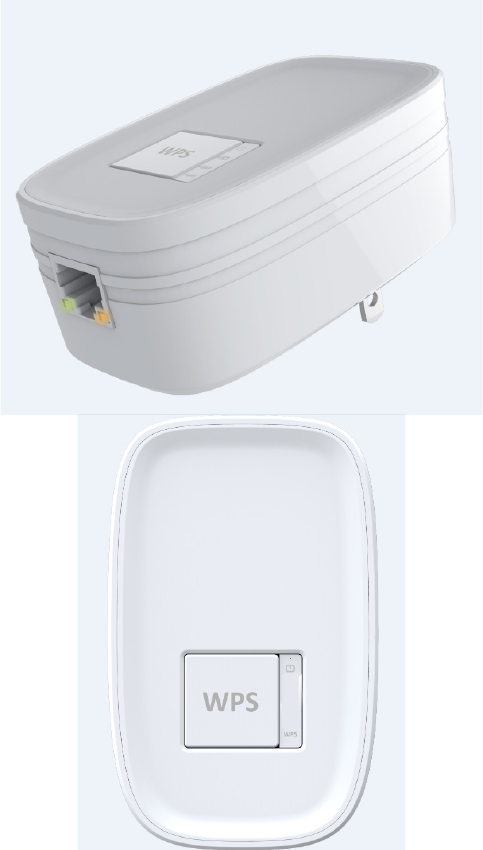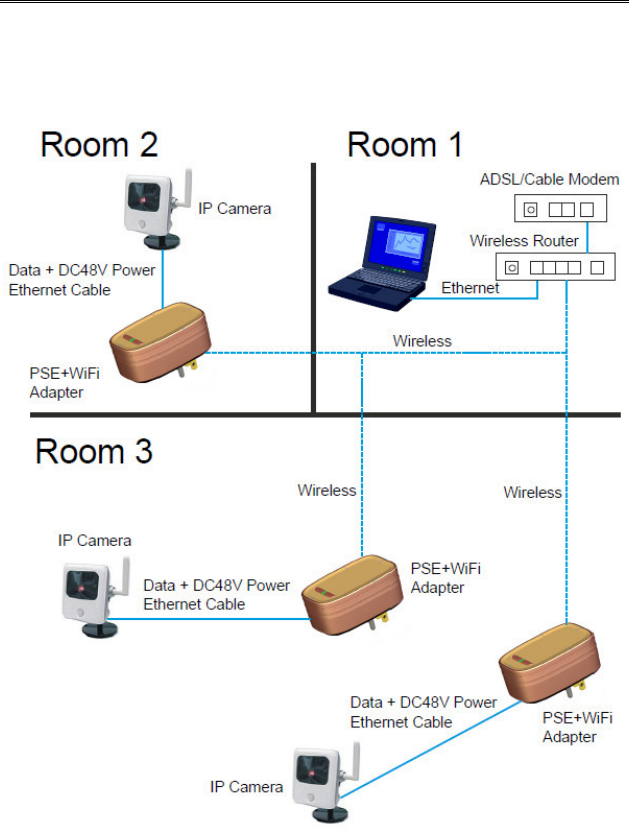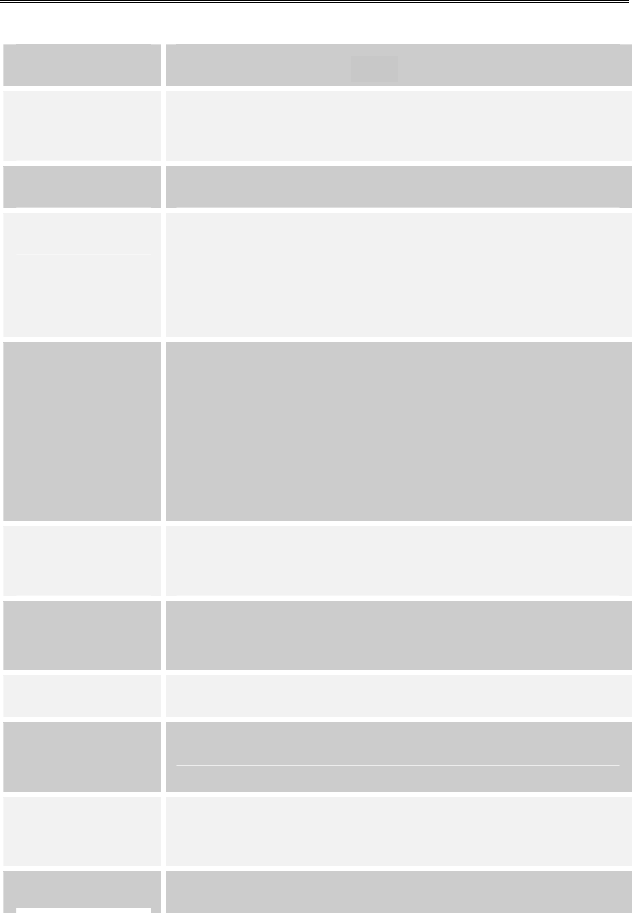User Manual.pdf

RP131
Wireless PoE Adapter
Installation Guide
Ver.1.1

Page 1
Overview
The RP131 (Wireless Adapter) is Wireless client with power
supply, it supply the power to the IP camera, it also connect the IP
camera to your existing Wireless network.

Page 2
Physical Details
Figure 1: RP131(Wireless PoE Adapter)

Page 3
LEDs
Power
(Green)
On - Normal operation.
Off - No power.
Green On - Associate to WiFi AP
Off - Not associate to WiFi AP
Flashing - Transmitting/Receiving
Data
Wireless/
WPS
Amber On - WPS failed (30 sec)
Off - No WPS action or WPS
Succeed
Flashing - WPS is processing (< 2
min)
Ethernet
(Green)
On - Ethernet connection is active.
Off - No Ethernet connection.
Flashing - Data is being transmitted or received
via the Ethernet Port.
PoE
(Amber)
On - The PoE powered device (PD) is
connected and the port is supplying power
successfully
Off - No PoE powered device (PD) connected

Page 4
Buttons
WPS
Button
Establish a secure connection between the
Wireless router (or Access Point) and IP camera
Push-Button-Method -
Press and hold the WPS button, but not no more
than 3 seconds
PIN Method -
Press the WPS button and hold for greater than
3 seconds
LAN Port Use a standard LAN cable to connect the RP131
to the IP Camera

Page 5
The installation allows the RP131 to directly connect to a wireless
router (or Wireless Access Point). You can extend the range of
your wireless network.
Page 6
1. Locate the RP131 near the Wireless Access Point
while doing the configuration.
2. Make sure the Wireless Access Point is on and
working properly.
3. Plug the RP131 into the AC power slot, then the
Power LED will remain on.
4. Plug the IP camera into the AC power slot
5. Connect a standard LAN cable from the RP131 to IP
camera
6. Push the WPS button on the Wireless Access Point
and make sure the Wireless Access Point is in WPS
mode. (The LED on the AP will blink and active for 2
minutes.)
7. Push and hold the WPS button on the RP131 for more
than 3 seconds. The WPS LED on the device will start
blinking for 2 minutes. The RP131 will automatically
associate to the Wireless Access Point with the
strongest signal and make connections.)
8. The connection of the RP131 and Wireless Access
Point is successfully established after the Wireless
LED remains on
The RP131 (Wireless PoE Adapter) is now ready for use.

Page 7
Dimensions
91.7(L) x 57(W) x 61.2(H) mm
Wireless
Standards
IEEE 802.11 b/g/n
Antenna Internal x 2
LEDs 1 * Power
1 * Wireless / WPS
1 * Ethernet
1 * PoE
PoE IEEE802.3 af Class 3
Maximum outpout power : 10 Watts
DC 48V, 208mA(maximum)
Over current protection
Data pin : 1, 2, 3, 6
Power pin : 4, 5, 7, 8
Ethernet
Interface
1 * RJ45 LAN Port
Auto-negotiation, Auto MDI/MDIX
Ethernet
Standards
Ethernet specification IEEE802.3,
IEEE802.3u, IEEE802.3x
AC Input 100 - 240VAC, 50-60 Hz, 0.8A(maximum)
Operating
Temperature
0° C to 45° C
Storage
Temperature
-25° C to 70° C
Operating 10-90%RH (max)
56.9

Page 8
Humidity
Certifications FCC Part 15 Class B
Safety
Approvals
UL Listed (UL60950-1)/cUL CSA No.22-
60950-01-03

Page 9
FCC Information to User
This device complies with part 15 FCC rules.
Operation is subject to the following two conditions:
(1)this device may not cause harmful interference
(2)this device must accept any interference received,
including interference that may cause undesired operations.
FCC Information to User
This device complies with part 15 FCC rules.
Operation is subject to the following two conditions:
(1)this device may not cause harmful interference
(2)this device must accept any interference received, including interference tha
t
may cause undesired operations.
This equipment has been tested and found to comply with the limits for a Class B
digital device, pursuant to Part 15 of the FCC Rules. These limits are designed to
p
rovide reasonable protection against harmful interference in a residential
installation. This equipment generates, uses and can radiate radio frequency energy
and, if not installed and used in accordance with the instructions, may cause harmful
interference to radio communications. However, there is no guarantee tha
t
interference will not occur in a particular installation. If this equipment does cause
harmful interference to radio or television reception, which can be determined by
turning the equipment off and on, the user is encouraged to try to correct the
interference by one of the following measures:
-Reorient or relocate the receiving antenna.
-Increase the separation between the equipment and receiver.
-Connect the equipment into an outlet on a circuit different from that to which the
receiver is connected.
-Consult the dealer or an experienced radio/TV technician for help.
FCC Caution: Any changes or modifications not expressly approved by the party
responsible for compliance could void the user's authority to operate this equipment.
This transmitter must not be co-located or operating in conjunction with any othe
r
antenna or transmitter.
Radiation Exposure Statement:
This equipment complies with FCC radiation exposure limits set forth for an
uncontrolled environment. This equipment should be installed and operated with
minimum distance 20cm between the radiator & your body.
N
ote: The country code selection is for non-US model only and is not available to
all US model. Per FCC regulation, all WiFi product marketed in US must fixed to
US operation channels only.